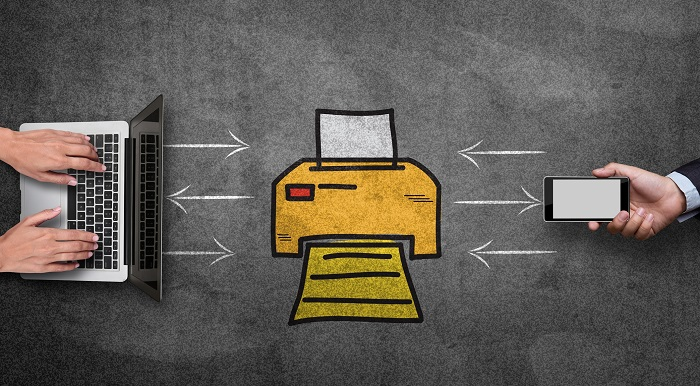Successful omnichannel marketing requires creating cohesive, seamless experiences. Although newer technologies, like augmented reality and personalized mobile marketing, have caused a buzz lately, it’s crucial not to overlook a customer engagement method that stands the test of time: print advertising.
Print advertising could spur other kinds of interactions
According to a 2015 business communications survey from InfoTrends 35 percent of respondents linked print and digital media campaigns. Around 40 percent said they used three kinds of media as part of their marketing campaigns.
Many retailers use direct mail print advertising to encourage people to take action on a company website, or social media channels. For example, Birchbox, a subscription service that sends people monthly beauty samples, boosts its sales with a strong social media presence.
Podcast: Navigating The Subscription Economy
Each box contains a brochure discussing various products inside, how much they cost, and how to use them. It also strategically advertises a hashtag for people to use as they show off their box contents on social media.
One of Birchbox’s goals is to make people love their samples so much that they buy the full-sized versions on its website. Occasionally, brands sponsor Birchbox editions (Etsy and Vogue magazine are two relatively recent examples). Brand partner companies also insert postcards into Birchbox containers, encouraging people to visit websites or social media feeds.
Brain wave studies verify print ad worthiness
Digital media is undoubtedly convenient, but scientists discovered print media still wins out in other ways. According to a study from neuromarketing firm TrueImpact, print ads required 21 percent less cognitive processing than digital media. Company name recall was 70 percent higher for people exposed to direct mail pieces versus digital content. Researchers also concluded the ventral striatum area of the brain — previously connected to feelings of valuation and desire — activated more significantly when people saw print advertisements, compared to digital ones.
Perhaps that’s because certain aspects in print ads (the texture of an enlarged piece of food, or the brilliant colors of a sunset positioned behind a vehicle, for example) aren’t always as apparent on a smartphone, tablet, or computer screen, as they might be when people come across larger magazine ads.
Print ads assist in generating data about interactions
Marketers explore various ways to determine the return on investment (ROI) for their campaigns. Using a QR code on a print campaign and tracking how many people scan it is one possibility.
Many marketers ask people to quote words or phrases (like offer codes) while ordering things by phone or through Internet forms. But what if people mishear those alphanumeric codes because of the announcer’s enunciation?
“The Daily Zeitgeist” is a podcast covering recent news and events. Many of the ads the hosts read ask people to enter the offer code acronym “TDZ” when buying products online.
They give as much clarification as possible when announcing the letters, but it’s tricky because all of them sound similar. Plus, not all podcast hosts speak as clearly as the pair involved with that show.
Podcast: Radio Advertising, Then And Now
Print advertising gives added advantages by letting people read codes on a page for clarity — and refer to them later for accuracy.
Some marketers might even have different codes for each magazine displaying a print ad, too. These codes can be tracked by device (if someone enters the code on mobile, vs. desktop, etc.) With this method, it becomes increasingly easy to find out which omnichannel marketing methods work best.
Print advertising provides ongoing inspiration
Print advertising could display beautiful landscapes that make people finally start planning long-delayed vacations. It could also give people the pushes they need to make good on promises to redecorate their homes. This is a reality Swedish retailer IKEA knows well.
Anyone can download the company’s full catalog digitally, but IKEA still prints physical catalogs, too. That decision helped create a billion-dollar brand.
The catalog pages typically feature examples of how people use products in their homes. And, as people who visit IKEA stores learn, going into one of the brand’s showrooms at a physical store is almost like walking into a fully-functional home – complete with beds, kitchen tables and desks.
Airbnb does something similar with its print magazine, which they send to their hosts. It features content about experiences people enjoy when they travel, as well as content to help readers make the most of their excursions.
Print ads enable product samples
Even the most memorable videos or brand-focused social media posts can’t demonstrate exactly how a product tastes, feels and smells. However, print ads can – if they feature free samples. Beauty magazines commonly feature print ads with perfume-infused paper, or single-use packets of lotion attached to them.
Aveeno ran a print ad encouraging people to send a text message to a shortcode to get a free sample. It’s possible to use that method through non-print advertising too, but those ads wouldn’t allow immediately providing samples when people turn to a page in a catalog or magazine.
Print isn’t dead. It’s just evolving
These principles and case studies demonstrate how print still has an effective and well-deserved place in today’s omnichannel marketing mix. The most successful instances encourage people to interact with brands through other touchpoints, increasing brand recognition and customer loyalty.








